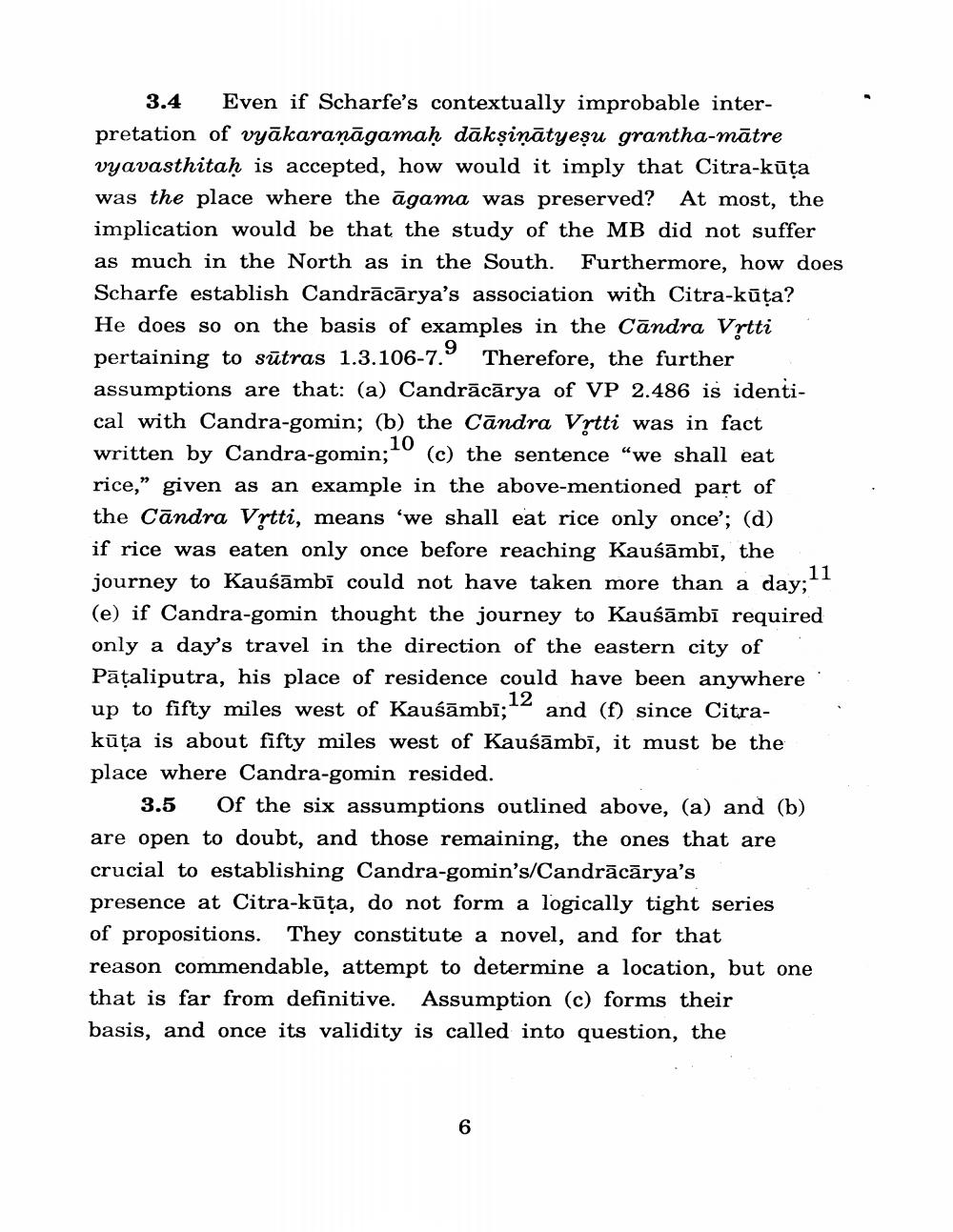Book Title: Paninian Studies Author(s): Ashok Aklujkar Publisher: Ashok Aklujkar View full book textPage 6
________________ 3.4 Even if Scharfe's contextually improbable interpretation of vyākaranāgamaḥ dākṣiṇātyeşu grantha-mātre vyavasthitaḥ is accepted, how would it imply that Citra-kūta was the place where the āgama was preserved? At most, the implication would be that the study of the MB did not suffer as much in the North as in the South. Furthermore, how does Scharfe establish Candrācārya's association with Citra-kūta? He does so on the basis of examples in the Candra Vrtti pertaining to sūtras 1.3.106-7. Therefore, the further assumptions are that: (a) Candrācārya of VP 2.486 is identical with Candra-gomin; (b) the Cāndra Vrtti was in fact written by Candra-gomin; 10 (c) the sentence “we shall eat rice,” given as an example in the above-mentioned part of the Candra Vrtti, means 'we shall eat rice only once'; (d) if rice was eaten only once before reaching Kaušāmbī, the journey to Kausāmbi could not have taken more than a day; (e) if Candra-gomin thought the journey to Kausāmbī required only a day's travel in the direction of the eastern city of Pāțaliputra, his place of residence could have been anywhere up to fifty miles west of Kaušāmbī;12 and (f) since Citrakūţa is about fifty miles west of Kausāmbī, it must be the place where Candra-gomin resided. 3.5 Of the six assumptions outlined above, (a) and (b) are open to doubt, and those remaining, the ones that are crucial to establishing Candra-gomin's/Candrācārya's presence at Citra-kūța, do not form a logically tight series of propositions. They constitute a novel, and for that reason commendable, attempt to determine a location, but one that is far from definitive. Assumption (c) forms their basis, and once its validity is called into question, thePage Navigation
1 ... 4 5 6 7 8 9 10 11 12 13 14 15 16 17 18 19 20 21 22 23 24 25 26 27 28 29 30 31 32 33 34 35 36 37 38 39 40 41 42 43 44 45 46 47
